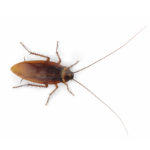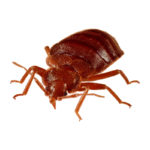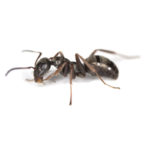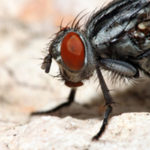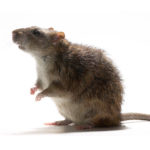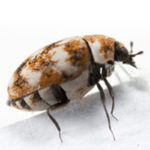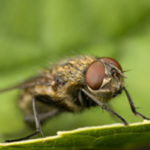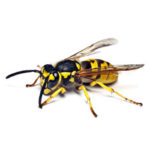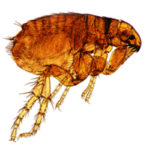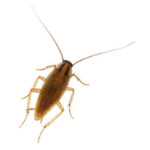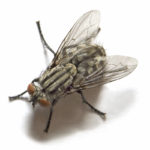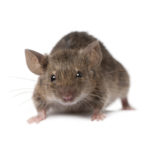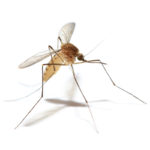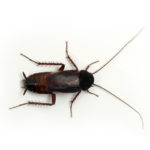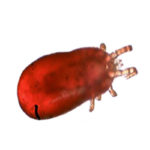Home »
Pests
Primarily nocturnal pest, prefers a warm, moist environment with an optimum temperature of 28°C. Live on average for 15 months. Can be distinguished from nymphal stages by the presence of wings.
Read more...
Read more...
A wingless ectoparasite with an oval body. The body is flattened unless it has taken a blood feed, after which the abdomen will be distended as it taken on a blood meal up to 7 times its own bodyweight. The bed-bug inhabits houses worldwide.
Read more...
Read more...
Widely distributed throughout Britain. Frequently close to, and in association with human dwellings. They create their nests outside underground in almost any location which will allow them to burrow.
Read more...
Read more...
Large ears and a slender body, with a tail longer than the combined length of the head and body. Equally at home on the ground or at height. In the urban environment they will be frequently found in a building’s roof or attic space.
Read more...
Read more...
When adults emerge they can be as large as 11mm. With an acute sense of smell they actively seek carrion and can live for several weeks dependant on the ambient environment. Frequently pests of meat factories, slaughter houses or sites where there are dead animals.
Read more...
Read more...
A short muzzle and a heavy body, with a tail shorter than the combined length of the body and head. Live communally in burrows, a typical burrow may have multiples entry and exit points. Burrows are usually found in earth banks around buildings and occasionally underneath them.
Read more...
Read more...
The larvae grow to a size of 5mm, having a banded appearance and are covered in short bristles. Larvae infest carpets and fabrics which are undisturbed or under compression, behind and underneath furniture. Adults can be seen wandering on the carpet and flying towards light source.
Read more...
Read more...
The adults are 6mm long with a black thorax covered in a sheen of golden hairs. Usually appearing in great numbers after periods of cold weather with a slow and sluggish flight. Commonly found in window edging or in roof spaces
Read more...
Read more...
Adult wasps are 10-20mm long with a distinctive yellow and black patterning all over their bodies. Common throughout Britain and Northern Europe, favouring sites which are enclosed such as: soil banks, cavities in trees or walls and roof spaces.
Read more...
Read more...
A small laterally compressed wingless insect, yellow to black in colour with backward facing spines. An ectoparasite of mammals and birds and feed on the blood of the host when adult. The signs of an adult infestation will be most readily recognised by the presence of bite marks on the host.
Read more...
Read more...
Primarily nocturnal pest, preferring a moist, warm environment with an optimum temperature around 30°C. Commonly a pest of kitchens, larders and restaurants. Faecal smears in conjunction with a distinctive odour are both clear indicators of an infestation.
Read more...
Read more...
In this article printed in the June & July issue of Pest magazine, Gerwyn Jones (Asia Pacific manager at PelGar International) explains that mice are causing pest control experts the most concern.
Read more...
Read more...
The housefly is found worldwide, but in the UK is most commonly associated with any sites which have a lot of decaying organic matter. Larvae tend to produce ammonia when they moult giving harbourage a distinct and unpleasant smell. Adults can be seen flying through the air.
Read more...
Read more...
Has grey brown fur which is only slightly lighter on the underside, with a tail which is 80% the length of the head and body combined. The adult weighs on average 15-18 grams. Tend to infest houses and are rarely found outside where they are readily outcompeted by other rodents, like the wood mouse.
Read more...
Read more...
Widely distributed through Britain. Preferring to breed near sources of still freshwater, such as drains and underground sumps. Larvae will be visible in water. Adults are strong fliers, emitting a familiar drone whilst in flight. They are persistent biters, preferring to feed at dusk.
Read more...
Read more...
A large cockroach, 20-24mm long when adult. Primarily a nocturnal pest, preferring a moist environment. A common pest of basements and cellars, and found in association with toilets, behind baths and sinks, where large numbers will congregate around sources of water.
Read more...
Read more...
Found throughout the UK outdoors, infesting wild bird nests. More recently have become a pest of poultry rearing facilities both domestic and commercial. Heavy infestations can cause severe debilitation of the birds and lowered egg production rates.
Read more...
Read more...

